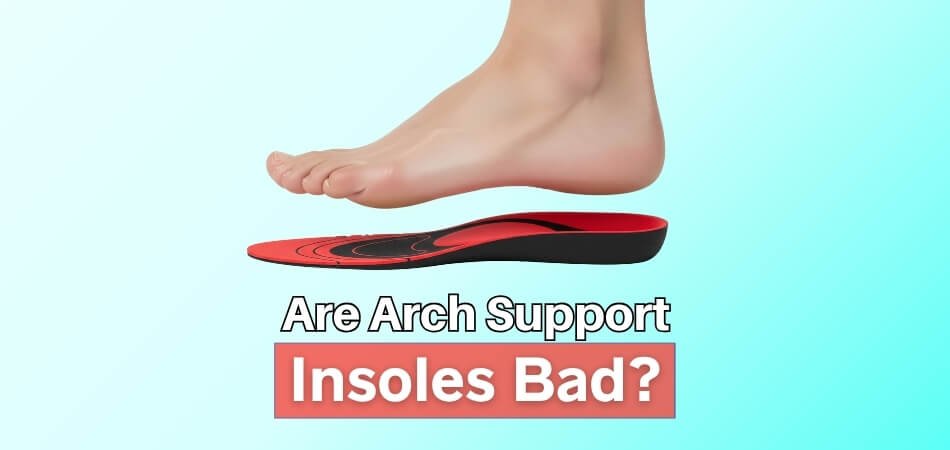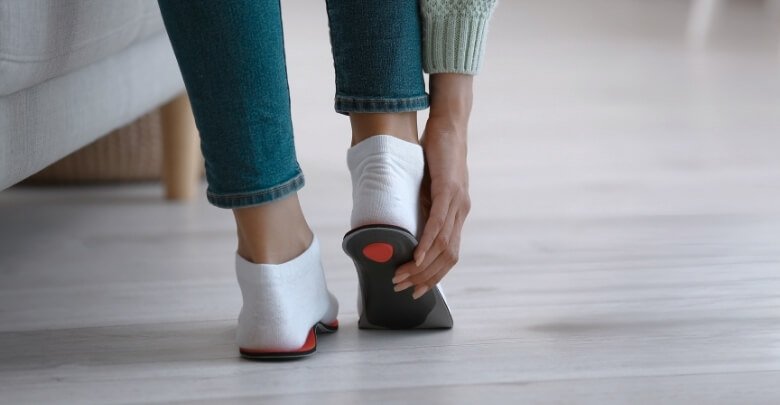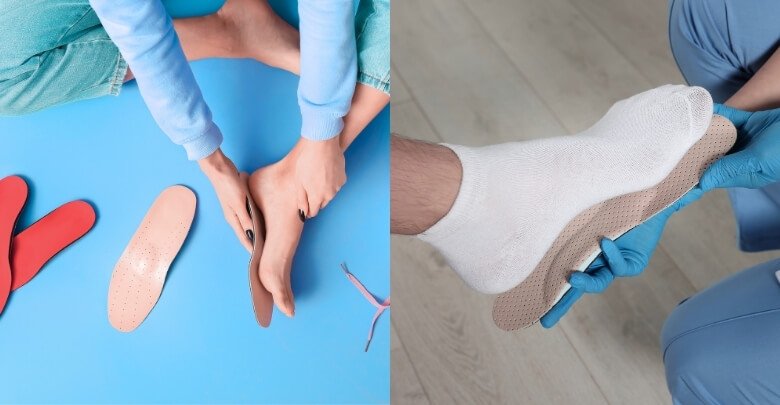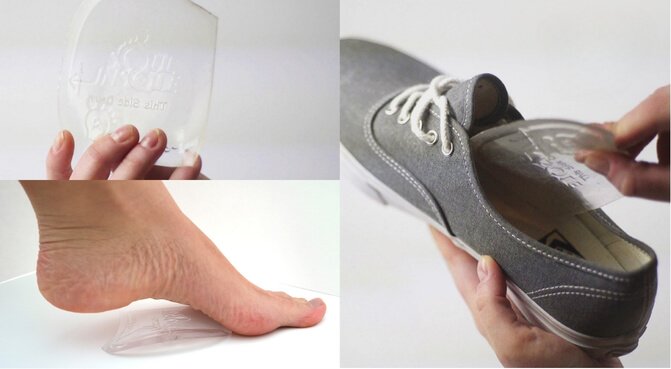Tired feet can make your whole day harder. If you stand a lot or have flat feet, you might have thought about using arch support insoles. They are made to help with foot pain and give your feet extra support. But some people wonder if they do more harm than good.
So, are arch support insoles bad?
Arch support insoles are not bad if they fit well and are used correctly. They can help with pain and support if you have flat feet or stand a lot. But if they are too high or don’t fit right, they can cause pain or muscle tiredness. Always use them with care.
Keep reading to learn how to use them safely.
Are Arch Support Insoles Bad?
Many people use arch support insoles to help with foot pain or tired feet. But are they always safe to use? The truth is, it depends on your feet, how well the insoles fit, and how you use them.

Let’s look at both the good and the bad sides of using arch supports. Are Arch Support Insoles Bad?
Yes and no. Arch support insoles are not bad by themselves. When they fit well and are used correctly, they can help. But if they don’t fit your feet or you rely on them too much, they might cause pain or make things worse.
Picking the right insole brand is important. Some products, like Soul Insole, are designed to support your arch without harming your natural movement. Always check the fit and comfort level before using any insole long-term.
Can Flat Feet or Pronation Be Effectively Managed Without Arch Support?
Yes, flat feet or pronation can be managed without arch support. Many people improve their symptoms using exercises, better shoes, and simple changes in daily habits. Some may still need extra help, but arch support is not the only answer. Let’s look at the ways you can manage flat feet or pronation without using arch insoles.
Exercises and Physical Therapy
Foot exercises make muscles and tendons stronger. Strong feet help support your arch and reduce pain. Try heel raises, toe curls, or roll a ball under your foot. Regular practice can make your feet feel better and improve your balance.
Stretching for Relief
Tight muscles, like your Achilles tendon, can make flat feet hurt more. Stretching these muscles every day can ease discomfort. Simple calf stretches work well for most people. Less pain means you move better and feel more comfortable.
Choosing Proper Footwear
Good shoes help your feet stay in the right position. Pick shoes with a firm heel and wide soles for support. Avoid barefoot walking, especially on hard surfaces, to keep your feet safe. Wearing the right shoes stops symptoms from getting worse.
Lifestyle and Activity Changes
Change your daily habits if your feet hurt. Cut down on high-impact sports if they cause pain. Spend less time on hard floors if possible. Simple changes can make a big difference for your feet.
When Arch Supports May Still Help
Sometimes arch supports are still useful for severe flat feet or very painful pronation. Over-the-counter or custom orthotics help move pressure away from sore spots. They do not cure flat feet, but they can prevent your arch from collapsing more. Custom insoles from a podiatrist work best for severe symptoms.
How Do Poorly Fitted Insoles Impact Foot Pain and Overall Health?
Many people use insoles to reduce foot pain and improve comfort. But if the insole doesn’t fit well, it can cause more harm than good. Poorly fitted insoles affect not just your feet, but your whole body. Here are how it can intact your foot pain and overall health.

Extra Foot Pain and Pressure
Wrong insoles push against the foot in the wrong spots. This makes pain worse and may lead to sore spots or blisters. Arch support that’s too high or too low adds more pressure. Over time, feet may stay sore even while resting.
Changes in Walking Style
A bad insole can change how your feet move when walking. These small changes stress the knees, hips, and lower back. You might feel tired or stiff after short walks. Poor alignment can spread pain to areas beyond the feet.
Tired Muscles and Strain
Foot muscles work harder when the support is not right. That extra effort makes feet, ankles, and calves hurt after walking. Pain may start mild but build up fast. Overworked muscles tire quickly and lose strength over time.
Uneven Shoe Damage
Insoles that don’t sit well inside shoes cause rubbing and friction. Shoes may wear down faster on one side. Poor fit can also shift your foot while walking. This leads to more pressure and discomfort each day.
Higher Risk of Injury
Wrong insoles may cause the body to move in unsafe ways. This may lead to shin splints, joint aches, or worse. Falls or twists may happen more easily. Unnatural support increases the chance of long-term injury.
Warning Signs After Use
Some discomfort is okay when first using new insoles. But if pain lasts more than a few weeks, it’s not normal. Long-term pain means something doesn’t fit right. It’s smart to replace them or see a foot doctor.
When Might Arch Support Cause Problems?
Sometimes using arch support sounds like the perfect fix for sore feet, but things can get tricky pretty fast. Many people start using insoles without knowing what really fits their feet or shoes. That’s when problems show up, making your feet feel worse, not better. Let’s talk about the times arch supports might actually cause trouble.

Wrong Arch Height
If the arch in the insole is too high, it can press into your foot and feel super uncomfortable, almost like a hard lump. On the other hand, if the arch is too low, it won’t give the support your foot needs. Both of these can lead to soreness or pain, especially when walking a lot. It’s important to match the arch height with your actual foot shape. Otherwise, your foot may feel tired or even hurt all day.
Sudden Use
Your feet aren’t used to big changes overnight, especially if you’ve never worn arch support before. Jumping straight into stiff or high arch insoles can shock your muscles and joints. Instead of helping, they might cause cramps, aches, or even new pain in your legs or ankles. It’s better to start slow and give your feet time to adjust. Trying too much too fast usually ends badly.
Too Much Correction
Sometimes, insoles try to fix too much at once, and that can backfire. When an arch support is too stiff or pushes too hard, it might change how your feet move. This can lead to weird walking patterns and more pain, not less. It’s like trying to fix a small problem by creating a bigger one. Your feet need balance, not pressure in the wrong spots.
Bad Shoe Match
An arch support might be fine on its own, but if your shoes don’t match it, things can get painful. For example, narrow shoes or soft rubber shoes don’t work well with bulky or firm insoles. They can squeeze your feet or make the insole slide around, which gets really annoying. Also, the impact of arch insoles in big shoes can be just as uncomfortable, making your foot unstable and tired. That’s why both the insole and the shoe need to work well together.
Ignoring Foot Problems
Not all insoles work for every foot type or issue. If someone has a special condition, like plantar fasciitis or heel spurs, a basic arch support might not help. In fact, it can make the pain worse by missing the real problem. Cheap or one-size-fits-all insoles often don’t give the right support. That’s why it’s smart to check what your feet really need before buying anything.
Natural Foot Movement
Your feet have their own way of moving, kind of like a spring, especially when you run or walk fast. Some arch supports get in the way of that natural motion. They can block the springy effect your feet use to save energy. That means you might feel more tired even if you’re not walking more. It’s like your feet are working harder than they should.
Long-Lasting Discomfort
It’s normal for feet to feel a little weird during the first few days with new insoles. But if the pain sticks around for weeks or keeps getting worse, that’s not okay. That usually means the insoles don’t fit right or just aren’t good for your feet. Don’t wait too long thinking it will get better. Change them or talk to someone who understands foot health.
When to Consider Arch Support Insoles?
Many people deal with foot pain without knowing what’s causing it. Sometimes, the answer is something as simple as extra support. Arch support insoles can help in many different situations when your feet or body feel off. So, when should you consider one? Here are the points.
Flat Feet or High Arches
Feet without a natural arch or with too much arch can feel stiff or sore. Arch insoles add structure and balance for support. They help improve how the foot moves during walking or standing. This lowers stress and improves foot comfort every day.
Pain in the Heel or Foot
Pain in your heel or under your foot can come from pressure in the wrong spots. Arch support helps spread weight more evenly. This reduces the pull on tendons like the plantar fascia. Over time, walking and standing become less painful.
Joint and Back Discomfort
Foot problems often cause pain in the knees, hips, or lower back. That’s because your body shifts to adjust. Arch supports help fix this by aligning the foot better. This may ease pressure on joints and muscles above the feet.
Long Standing Hours
Spending many hours on your feet can wear them out quickly. Arch insoles give extra support to fight daily strain. They protect the arch and cushion your feet from hard floors. This helps reduce muscle tiredness and soreness over time.
Healing After Injury
Injuries to your legs or hips can change how you walk. That can lead to pressure in the wrong places. Arch supports help guide your steps back to normal. They also reduce stress so your body can heal better.
Uneven Shoe Wear
Shoes that wear out more on one side mean your steps may not be balanced. That often points to foot rolling issues. Arch support can stop the foot from leaning too much. This keeps your walking smooth and reduces shoe damage.
Sports and Exercise
Runners and athletes put a lot of force on their feet. Arch support can help absorb shock and keep feet stable. That means fewer injuries and better performance. You’ll also feel less tired after tough workouts.
Swelling and Soreness
Feet that often swell or feel sore after walking might need extra support. Arch insoles improve blood flow and ease muscle strain. They also prevent pressure from building up in certain spots. This keeps feet feeling lighter and healthier.
Wearing Unsupportive Shoes
Shoes like flip-flops or flats give little to no foot support. This makes your feet work harder all day. Arch insoles add the missing support your shoes don’t offer. That helps protect your feet from long-term pain or injury.
How to Pick Suitable Arch Support for Your Feet?
Choosing the right arch support insoles can make a big difference in your daily comfort and foot health. It’s not just about grabbing any insole from the store — your foot shape, shoes, and daily habits all matter. Here are some simple tips to help you find the best support for your feet.

Know Your Arch Type
- Check if you have flat, neutral, or high arches using a wet test or professional foot scan at a store.
- Matching the insole to your arch type helps prevent pain and improves balance while walking or standing all day.
Match Your Shoes and Activity
- Every shoe needs the right insole type—runners, workers, or casual walkers all have different insole needs.
- Pick low-volume insoles for tight shoes and thicker ones for boots or athletic shoes that allow more space.
Pick the Right Support Level
- Flat feet need strong support to stop the arches from collapsing and help the foot stay more stable.
- High arches benefit from soft support that absorbs shock and gives comfort during walking, running, or standing.
Choose the Footbed Style
- Semi-rigid footbeds help fix rolling ankles and are great for those with foot movement problems like overpronation.
- Soft footbeds are better for tired feet needing a cushion but not too much correction or stiffness underfoot.
Think About the Material
- Foam and gel insoles give more bounce and padding for people who need comfort with every step they take.
- Cork or carbon fiber insoles are stiffer but give strong support to those who need extra control and firmness.
Get the Right Fit
- The insole should sit flat in your shoe, with no curling, tightness, or slipping when you walk or stand.
- Test them in-store if possible by walking a bit to check if your heels and toes feel secure and stable.
Wear and Adjust Slowly
- Give your feet time to adjust by wearing the insoles for short periods in the first week.
- Pain that sticks around could mean that the fit or support isn’t right, so try other types if needed.
When to Get Help
- If pain keeps coming back, it’s smart to ask a podiatrist for custom advice made for your feet.
- People with foot problems like plantar fasciitis need special insoles made for their condition and daily routine.
Getting the right arch support is not about luck — it’s about knowing your feet and what they truly need. Understanding the benefits of arch support insoles can help you choose the right fit and avoid common foot problems. Even a small upgrade can make each step feel more supported and comfortable.
FAQs About Arch Support Insoles: Good or Bad?
Arch support insoles are a common tool for relieving foot pain and improving comfort. But many people still have questions about whether they’re truly helpful or potentially harmful. Here are 10 frequently asked questions to help clear things up.
Can Arch Support Insoles Make My Feet Weaker?
In most cases, no. Well-fitted insoles support your arch and help muscles work properly, not replace them. But relying on insoles without doing any foot-strengthening exercises might reduce muscle engagement over time in some people.
Do Arch Support Insoles Work for Kids?
Yes, they can help children with flat feet or alignment issues. However, it’s important to choose child-specific insoles that match their foot shape. Always check with a pediatric podiatrist before long-term use for growing feet.
Are Custom Orthotics Better Than Store-Bought Arch Supports?
Custom orthotics are made for your exact foot shape and usually offer better results. Store-bought options help with general support but may not fix specific foot issues. Choose based on your foot condition and comfort level.
Can Arch Support Insoles Cause Knee Pain?
If insoles are too high, rigid, or don’t fit properly, they can change your gait and cause knee strain. Always make sure your insoles support your natural foot position and feel balanced during walking or standing.
Should I Wear Arch Supports All Day?
Wearing them all day is usually fine if they’re comfortable and properly fitted. If they cause soreness or fatigue, remove them. It’s best to ease into full-day use, especially if your feet aren’t used to extra support.
Do Arch Support Insoles Help With Bunions?
They won’t cure bunions, but they can reduce pressure and pain by improving foot alignment. This helps stop the bunion from getting worse. Look for insoles designed to ease forefoot pressure and offer a wider toe area.
Can Arch Support Insoles Be Washed?
Most insoles can be cleaned with a damp cloth and mild soap. Avoid soaking or machine washing unless the brand allows it. Keeping them dry and clean helps maintain their shape, comfort, and lifespan.
Are Arch Support Insoles Good for Flat Surfaces?
Yes, they are especially useful on hard floors like concrete. They reduce stress on the arch and cushion the impact. This prevents tiredness and pain, especially if you stand or walk on flat ground for hours.
Can Arch Support Insoles Cause Blisters?
Blisters may happen if the insoles are too thick, poorly fitted, or shift inside your shoes. Proper fit and material matter. Choose a size that matches your shoe and always wear socks to prevent friction.
Do Arch Support Insoles Expire or Wear Out?
Yes, over time, they lose their shape and support. Most last between 6 months to a year with regular use. Signs they need replacing include flattened padding, discomfort, or reduced support during walking.
Final Considerations
Arch support insoles can help your feet feel better if they are the right type and fit well. They should match your foot shape, your shoes, and what you do each day. You may wonder, are arch support insoles bad, but they are not bad if used the right way.
However, the wrong ones can hurt your feet or make the pain worse. Start slowly, and see how your feet feel after wearing them. If they still hurt after a few days, try a different kind or ask a foot doctor. Simple steps like these can stop bigger foot problems later.






